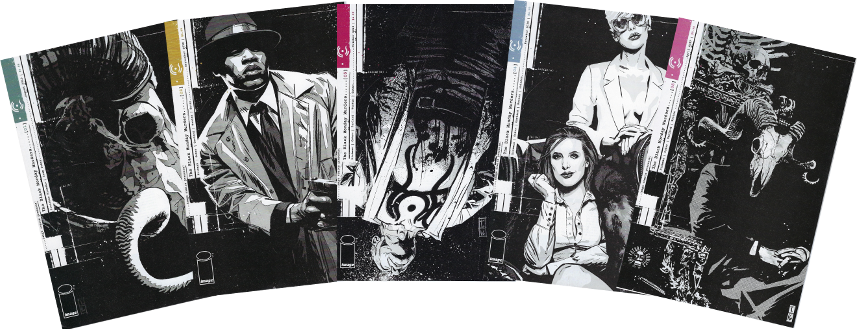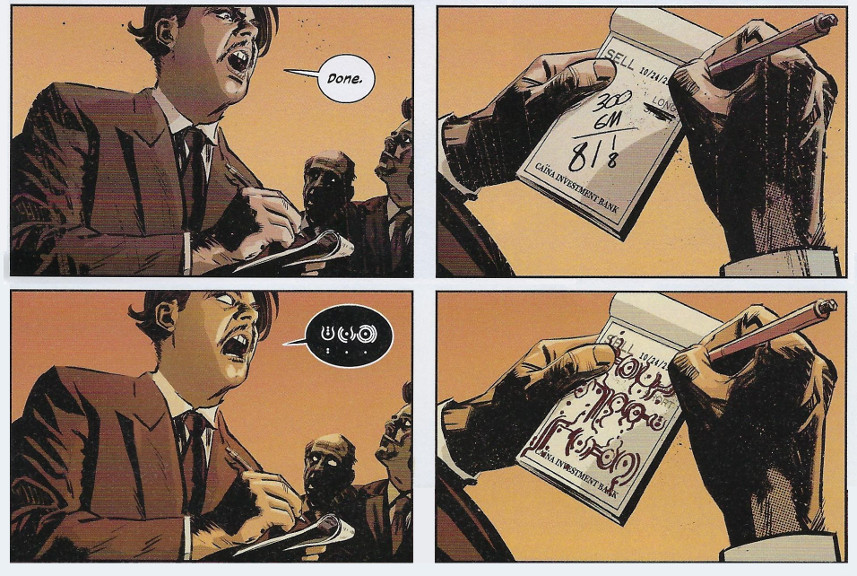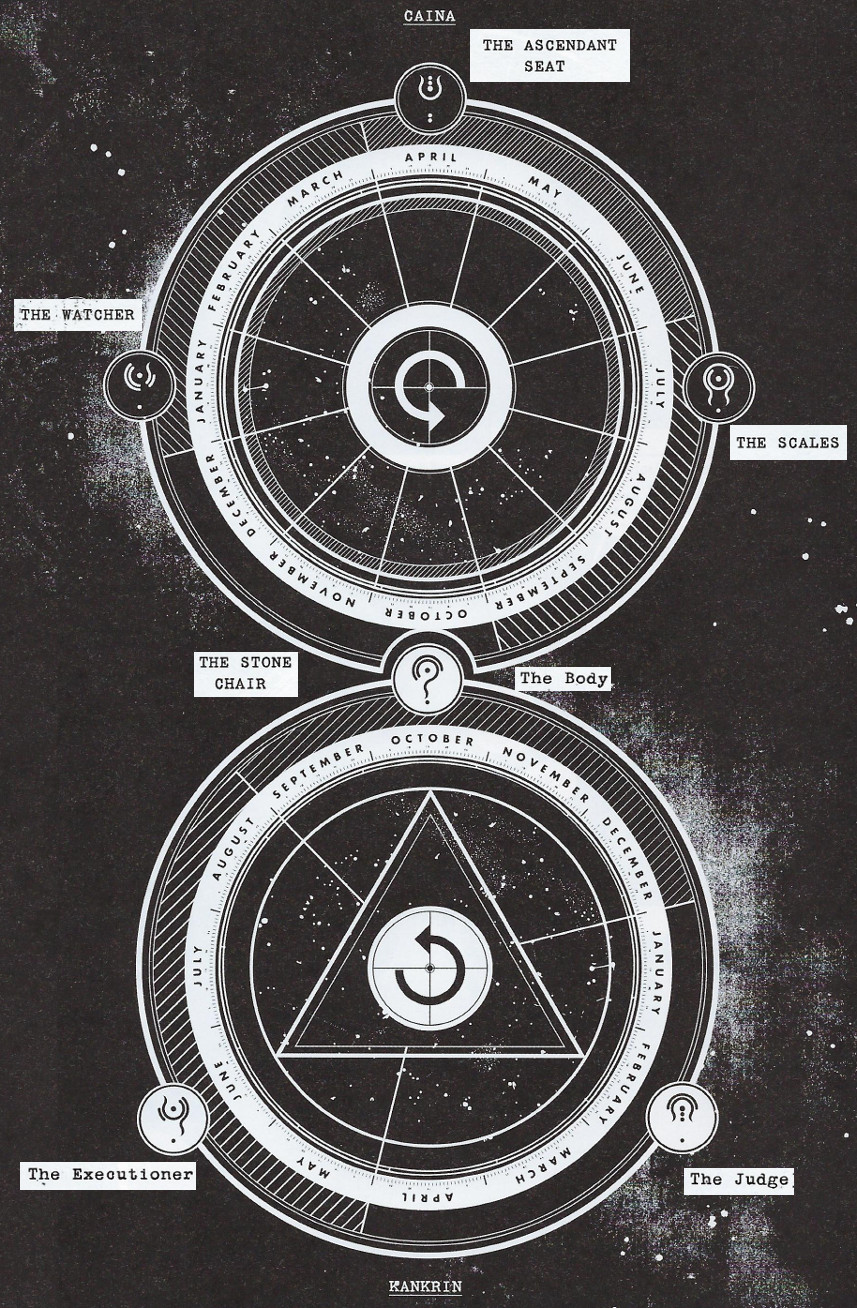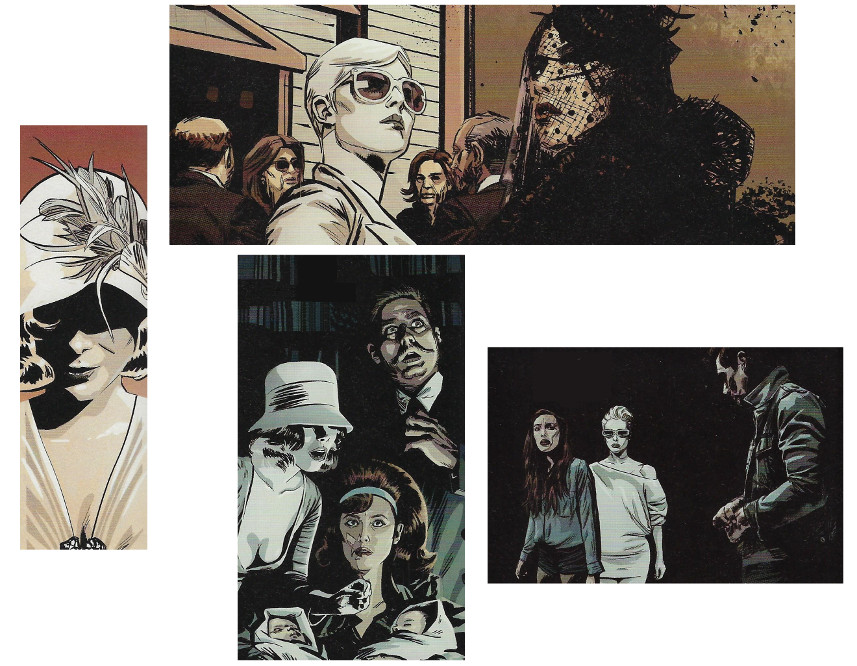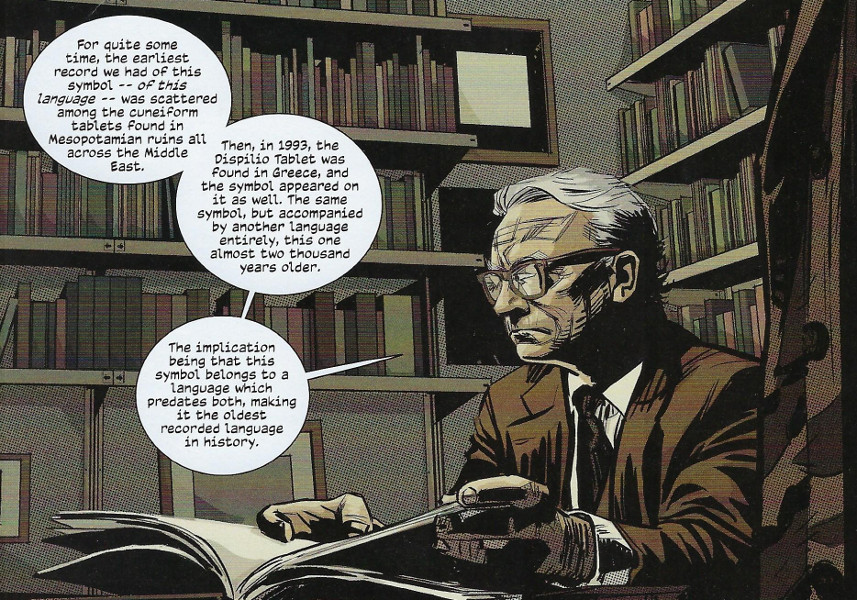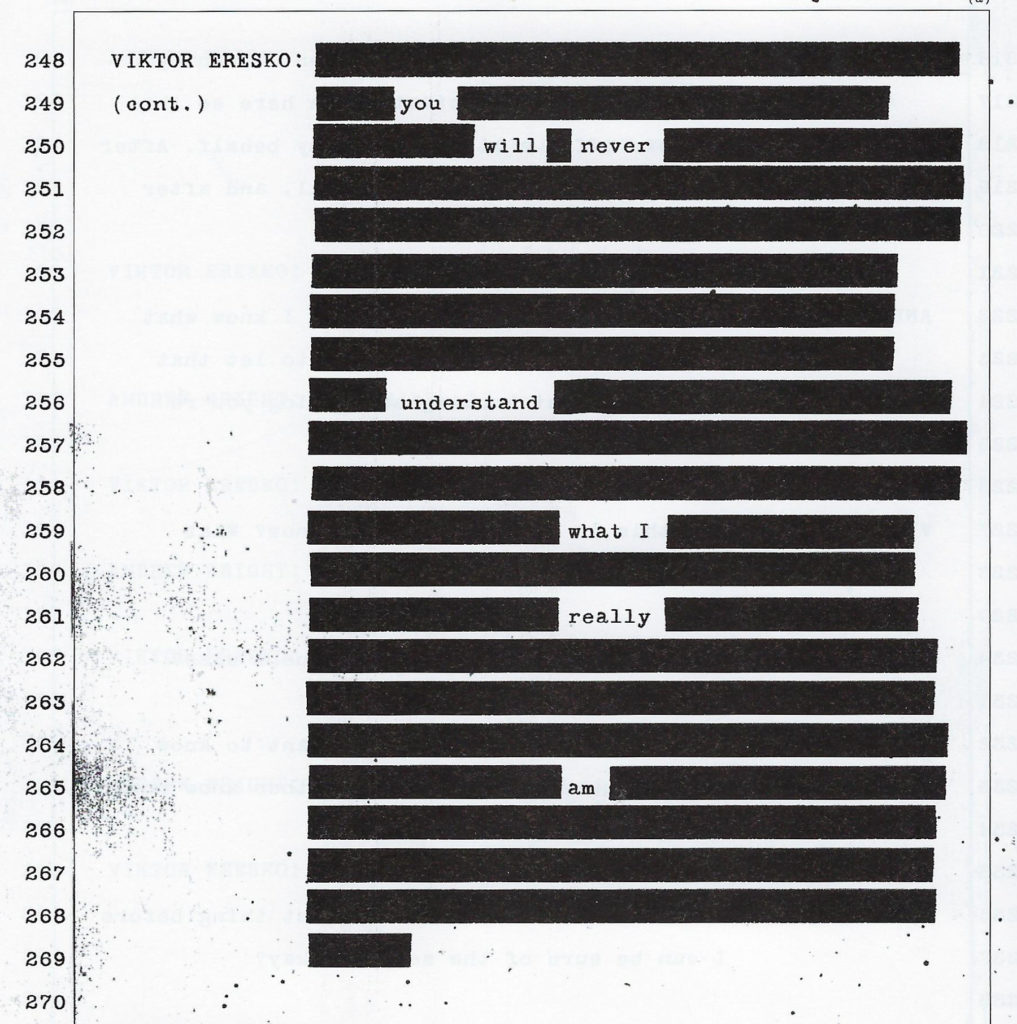On the surface of it there doesn’t seem to be much in the way of comic book fare in the stock market crash on October 24, 1929. Certainly, there is ample material for textbooks on economics and governmental policy willing and eager to discuss, argue about, and pontificate over Black Thursday, but surely there is nothing for comics.
Well, the creative team of Jonathan Hickman (writer), Tomm Coker (artist), Michael Garland (colorist), and Rus Wooton (letterist) clearly don’t agree with that sentiment. Their new series The Black Monday Murders, which is published by Image and is currently up to issue #5, centers in on the oft misquoted adage that money is the root of all evil.
In short, the plot deals with three entities: the satanic power that underlies banking and finance, the influential human elite who’ve made a deal with the devil for power and money, and the police who are called in to investigate the ritualistic murder of one of these elites on October 31, 2016 (the Black Monday from which the series derives its name).
The satantic power is mostly present by way of its absence; it is never directly seen, only occasionally discussed and then always obliquely, but is always lurking behind each move and decision of the power-elite. The latter are organized into various financial institutions called schools (Western, Eastern, Middle-Eastern, Asian, etc.), each vying for wealth and control while trying to circumvent what the devil is due. The police are mostly a non-factor background element except for the lone detective charged with getting to the bottom of who killed the victim and why.
The bulk of the action centers on the co-joined Western and Eastern school called the Caina-Kankrin Investment Bank. Originally Caina side was comprised of 4 ruling families: The Ackermans, The Rothschilds, The Dominics, and The Bischoffs. When the series opens we see the crash of 1929 just starting, complete with magical transformations on the trading floor.
The initial panic and mayhem are shortly followed by a far more sinister outcome. It seems that when the crash comes (i.e., the devil is getting his due), the person left holding the ‘Stone Chair’ must be sacrificed by the other families. The reader is then treated to a ritualistic murder of Charles Ackerman at the hands of Milton Rothschild while Raymond Dominic and J.W. Bischoff watch.
Hickman employs his usual non-sequential storytelling technique to gradually reveal that the Caina investment house, seeking a way to free itself of the Stone Chair sacrifice, coerces a merger with the Eastern School, the Russian Kankrin financial institution, on the eve of the collapse of the Soviet Union. This merger forces the Stone Chair into Kankrin’s control but sets the two halves into conflict (their wheels turn in opposite ways – see the following figure).
Years later, some, as yet, unrevealed hostility arising from the merger leads to the murder of Daniel Rothschild, grandson of Milton Rothschild, and holder of the Ascendant Seat, which affords the holder control of Caina-Kankrin. His murderer, a member of the original Russian Kankrin cadre and a current holder of the Stone Chair, not only takes no steps in covering his tracks but he also positions the dead body as a clue for the police.
It so happens that the officer assigned to the case, one Detective Dumas, is intuitive, clever, and possibly psychically enabled. He quickly realizes not only that the body has been positioned like the arms of the clock but also the significance of the time indicated.
This set of events positions Dumas to begin to investigate Caina-Kankrin, a task he is aided in by the assistance and consultation of Dr. Gaddis, Professor of Economics at Fordham. Like an episode of Colombo, the identity of the murderer is not really in question. The real trick is the motive for the crime and whether or not Dumas will be able to extract justice.
The drama and tension of The Black Monday Murders derives mostly from the internal family dynamic in Caina-Kankrin. In particular, old grudges between the various original families and between the Caina and Kankrin pieces, and conflict of values between the old ways of evil and an emerging sentiment to do good with all that money form the dynamic interplay.
Visually, the use of color and line style sets an oppressive mood well suited to the conspiratorial framework of the tale. Design elements common to Hickman tales also tend to show up, including stylistic alphabets and languages, presumably of his own making,
and a presentation of magical beings in monochromatic ways. Consider, for example, the many faces of the Rothschild familiar, Abbadon (‘affectionately’ called Abby), through the various epochs visited in the story.
Abby seems quite comfortable transitioning from a 1920s flapper style, thru a 1950s harridan ensemble and 1980s new wave look, to a 2010s ‘lesbian chic’ (starting on the left and moving counterclockwise), allowing her to always work her evil while looking her best.
Hickman’s dialog is also on point. Consider this exchange between Professor Gaddis and Detective Dumas as the former tries to explain to the latter why ‘money’ is so bad
Additional touches add to the verisimilitude, including historic recounts that lend an archaeological background to the mysterious language so integral to the satanic influence of Mammon in the story,
and narrative support devices, like the written transcript of a meeting between the Caina-Kankrin member Victor Eresko and his corporate lawyer, Andrew Wright, where redaction leads to revelation.
I’ll close with some personal observations. First, this work seems strongly inspired in its narrative construction by the Watchmen, specifically because of the presence of many pages of ‘textual’ material (transcripts, police reports, excerpts from diaries, etc.). Second, there is a distinct overlap with earlier conspiratorial works, primarily the Illuminatus Trilogy, although this work treats the subject matter of a vast conspiracy with a lot more reverence and seriousness. Finally, whether The Black Monday Murders turn out to be a financial success or not, it is an excellent example of how putting story first makes for an entertaining product.

